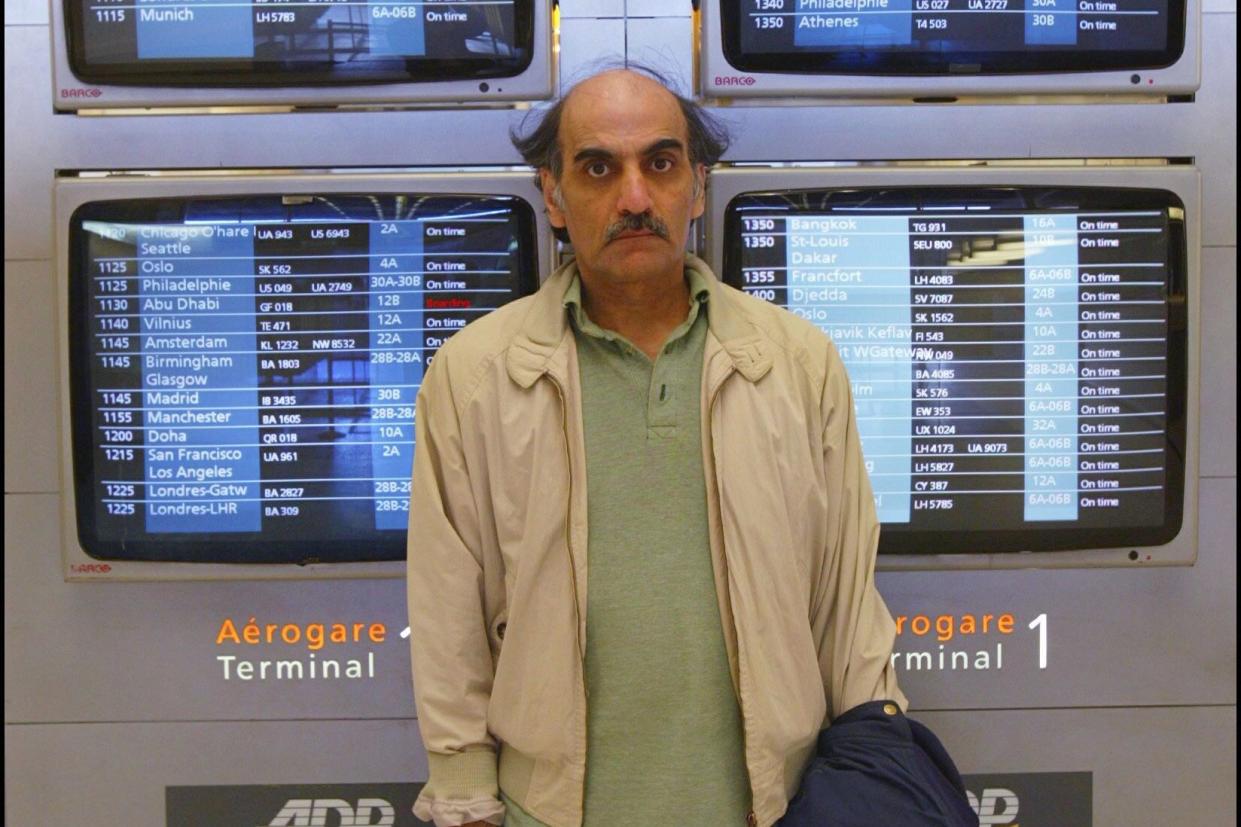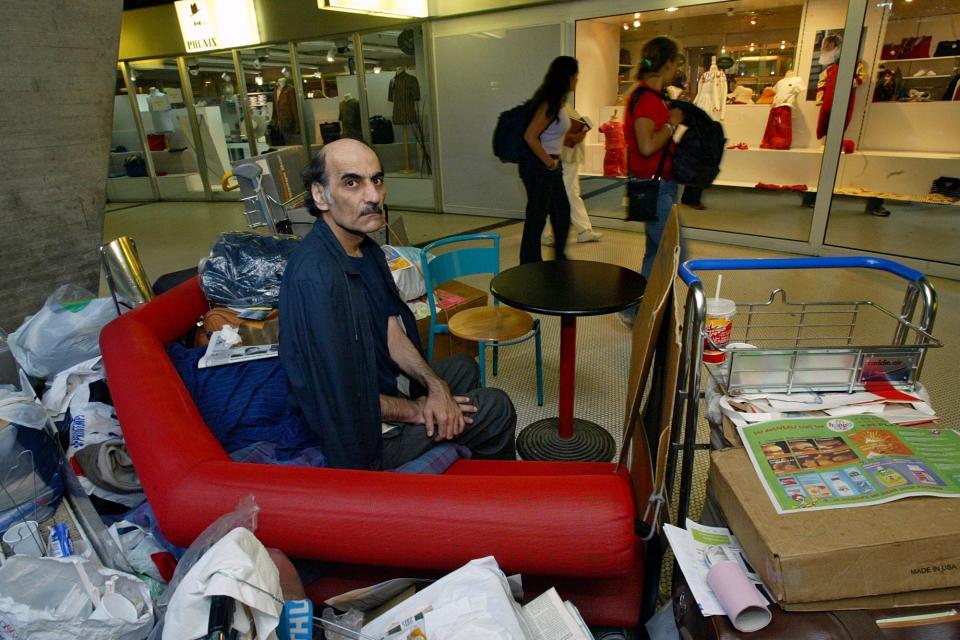Mehran Karimi Nasseri, Iranian Man Who Inspired 2004 Movie The Terminal , Dies in Paris Airport

- Oops!Something went wrong.Please try again later.
- Oops!Something went wrong.Please try again later.
Alexis DUCLOS/Gamma-Rapho via Getty
Mehran Karimi Nasseri, the Iranian man who lived in Paris' Charles de Gaulle airport for years and inspired the 2004 Steven Spielberg film The Terminal, died in the airport on Saturday.
Nasseri, who was born in 1945 and lived in the airport for 18 years, died of a heart attack in Terminal 2F of the airport, Paris airport authorities told NBC News. He lived in the airport from 1988 until 2006 after he lost his papers and was stuck in limbo.
An official told CNN that Nasseri "returned to live as a homeless person in the public area of the airport since mid-September, after a stay in a nursing home."
RELATED: 'E.T. the Extra-Terrestrial' Model from 1982 Movie Anticipated to Net $3 Million at Auction

AP Photo/Michel Euler, File
Nasseri's attempt at a journey to England via Belgium and France, and eventual decision to stay put in the airport in 1998 out of necessity, inspired the 2004 film starring Tom Hanks. The Terminal ended up earning $219 million worldwide and won John Williams a BMI Award in 2005 for its score.
"The Spielberg film suggests that he was stuck in a transit zone at Paris-Charles de Gaulle. In reality, he spent several stays there, but always in the public area of the airport, he was always free to move around," a spokesperson of Nasseri told CNN.
Never miss a story — sign up for PEOPLE's free daily newsletter to stay up-to-date on the best of what PEOPLE has to offer, from juicy celebrity news to compelling human interest stories.
Nasseri eventually turned down French authorities' offer to stay in France because he wanted to get to England instead, CNN reported.
तब्बल 18 वर्षे 'ते' विमानतळावरच कसे राहिले?#TheTerminal #MehranKarimiNasseri pic.twitter.com/vf6wHJz0BL
— BBC News Marathi (@bbcnewsmarathi) November 13, 2022
While a DreamWorks studio rep told PEOPLE in 2004 that the final movie was "in no way his story," Nasseri was still paid a reported $275,000 for the film's rights. In his early days, he would sleep on a red plastic bench, have his clothes cleaned at a concourse dry cleaners, and bathe in the men's restroom of the airport.
While then-lawyer Christian Bourguet said in 2004 that he was able to secure asylum for his client, Nasseri refused to leave and had "stayed so long that he can't reach the decision to leave."
"There aren't any theaters here," Nasseri told PEOPLE when asked if he'd seen the film, adding that the most annoying part about living in an airport was "the noise of the wheels on suitcases scraping across the tile floor."
RELATED: Steven Spielberg Says His Parents Were 'Nagging' Him to Make Movie About Them Before Their Deaths
Nasseri had two airport trolleys filled with items at the time, some of which were donated by employees of the airport. Some of his collected items were borrowed from travelers in waiting areas.
"It's immediately inviting," Hanks said of the movie in 2004, after the film's production built a faux airport terminal from scratch for the set. "This is actually the antithesis of what most motion-picture making is. It is bright, it is airy, it is cool."

